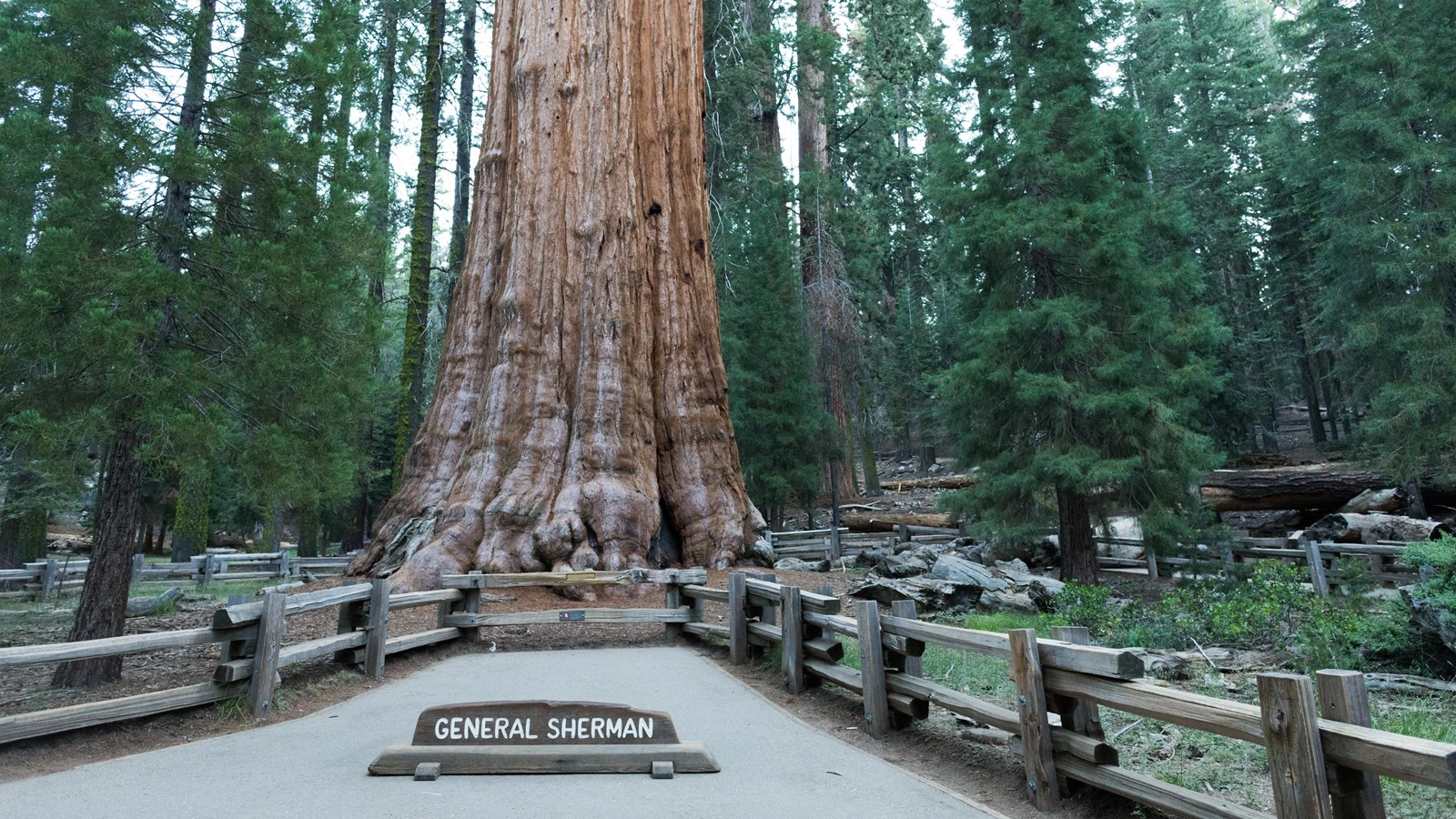Last updated: December 6, 2023
Place
General Sherman Tree

Audio Description, Scenic View/Photo Spot
There are taller trees, and wider trees, but the General Sherman Tree contains more wood (volume) in its trunk than any other tree on Earth. Behind the Sherman Tree are the General Grant, President, Lincoln, and Stagg trees. Another measure of tree volume is the total biomass of the tree-trunk, branches, roots, and foliage. If we measure the biomass, the Sherman Tree still ranks at #1, but the General Grant Tree loses second place to the President Tree.
Rapid growth over a long life accounts for the size of these trees, but they are not as old as once thought. The most recent age estimate of the Sherman Tree is about 2200 years old.
Sequoia roots are shallow but spread wide. They entangle with the roots of other sequoias, forming a kind of mesh that helps all the trees maintain balance and stability.
As you walk among sequoias, watch for Douglas squirrels, also called chickarees. They climb into sequoias and chew through the stems of cones. If you come across a tree that seems to drop a cone every few seconds, you know that a Douglas squirrel is cutting cones for dinner. They then eat the green, fleshy covering of the cones; look for chewed-up cones on the ground. They also store cones and dried mushrooms high in pines or sequoias.
The Congress Trail starts near the Sherman Tree, and provides a tour of some of the most spectacular sequoias of Giant Forest. This easy three-mile loop also connects to other trails that can take you throughout Giant Forest (be sure to take a map).
The Sherman Tree was once named the Karl Marx Tree by the Kaweah Colony, a utopian group that lived in Three Rivers before Congress created this park. The Kaweah Colony supported itself in part through logging. When the national park was established, their efforts were deemed illegal. One of their original structures, Squatter's Cabin, still stands near Crescent Meadow and is on the National Register of Historic Places.
In 1903, the Buffalo Soldiers protected these parks. Their leader, then-Captain Charles Young, was one of the first superintendents of these parks and the first African-American superintendent of any national park. He developed plans to protect the legacy of the giant sequoia groves, oversaw the building of the first roads into the parks, and protected both parks from illegal logging, grazing, and poaching.
Services and Parking
The main parking area and trailhead for the General Sherman Tree is located just off Wolverton Road. The parking area is one of the main shuttle stops in the parks. Shuttles stop here every 15 to 20 minutes.
Parking for people with disabilities is located on the Generals Highway 2 miles from the Giant Forest Museum and 3 miles from the Lodgepole Visitor Center.
The parking area provides restrooms, trash cans, water, and food-storage lockers.
Make sure that you store all food is stored in these lockers-bears can be active in this parking lot.
The General Sherman Tree is about a half mile from the parking lot. Be prepared for an uphill climb when return from your hike. In summer, you can avoid the uphill hike by walking from the Sherman Tree down to the accessible parking lot and shuttle stop along the Generals Highway. From there, take the Orange Route back to the main General Sherman Tree parking area.
Accessibility
Accessible parking is located on the Generals Highway 2 miles from the Giant Forest Museum and 3 miles from the Lodgepole Visitor Center. The parking area provides restrooms, trash cans, and water. An easy path leads to the General Sherman Tree from the trailhead. This wheelchair-accessible paved path is accessible by wheelchairs, strollers, and walkers. The trail is about 500 feet in length and is gently sloped.
In summer, the free park shuttle leads to the General Sherman Tree accessible parking area.
